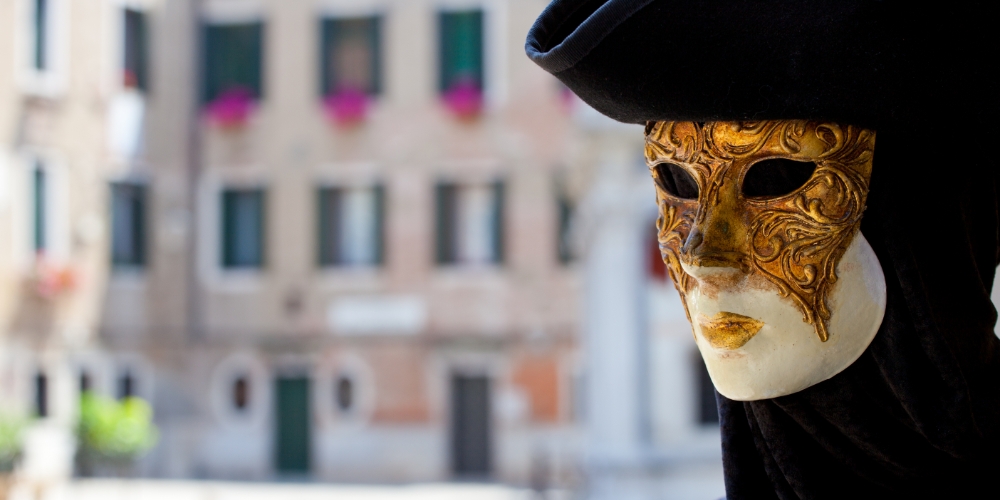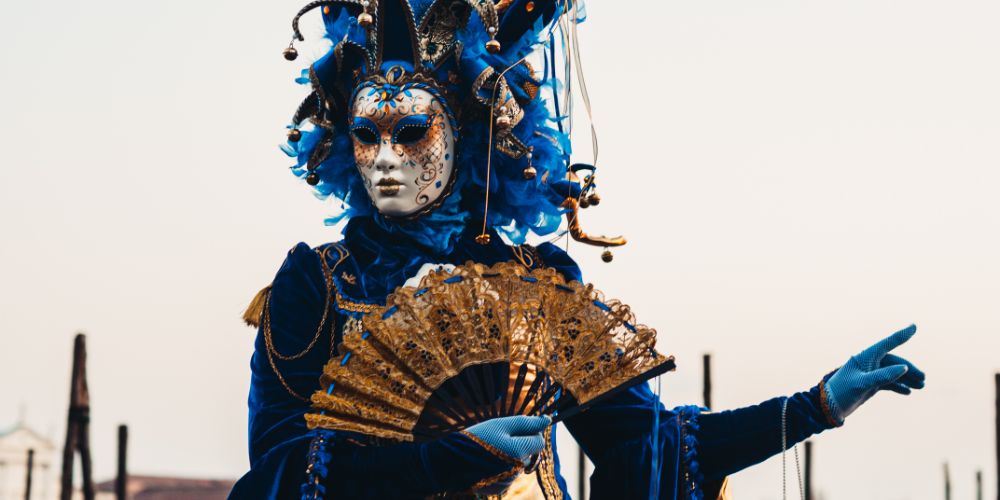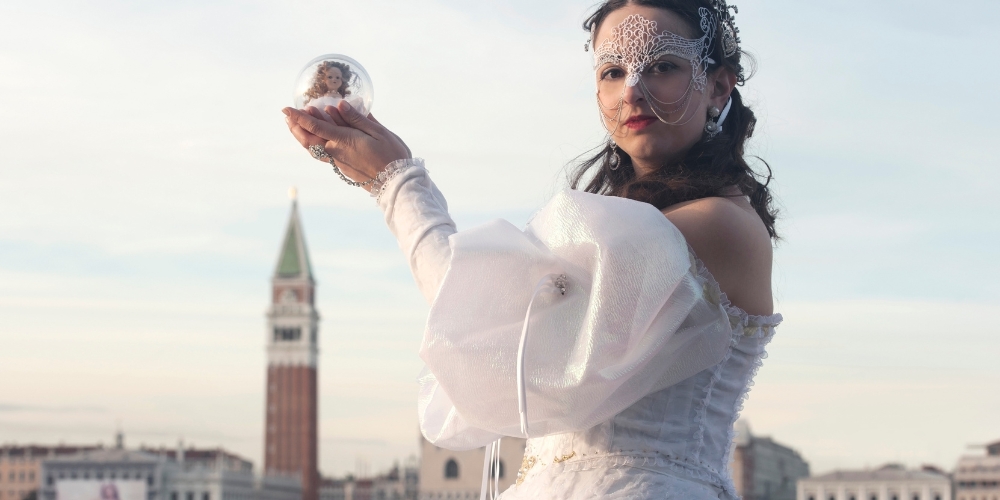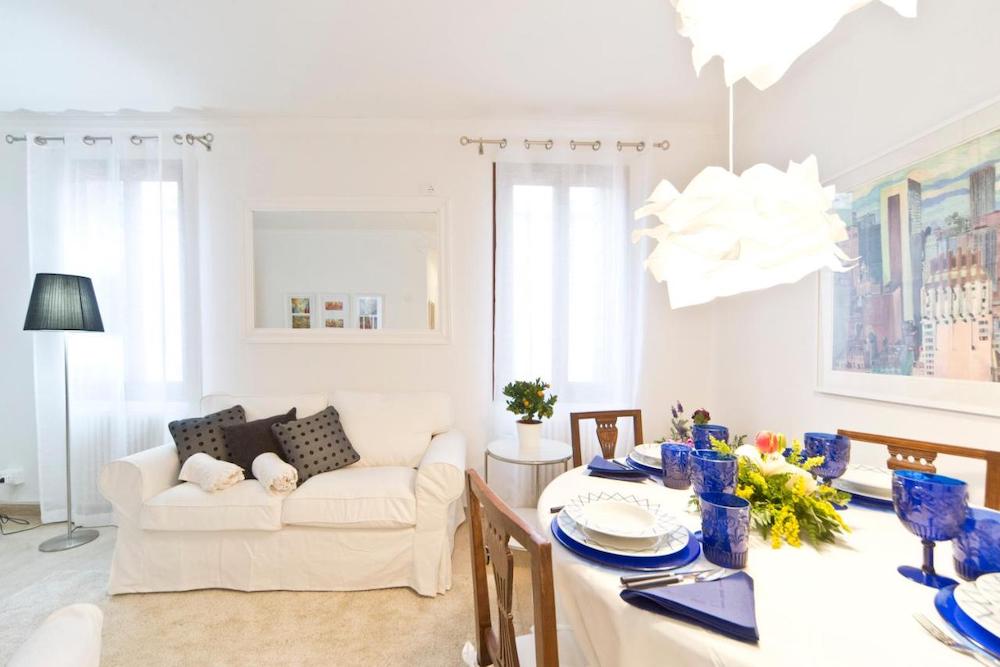Let's face it, Carnival is one of the most famous "monuments" in Venice. Oh yes, because this time of the year that sees transgression, amusement and carefree lightness as its connotative elements, reaches its maximum virtuosity in the lagoon city, with a great resonance all over the world.
Once upon a time, when Carnival took up most of the year, about six weeks, people indulged in fun in a goliardic spirit that united all, people and aristocracy, prelates and authorities, giving an unusual and permissive social leveling, unrepeatable on other days .
Yes, because the Carnival in Venice was also set up to grant the lower classes of the social scale a period dedicated exclusively to leisure, indulging in dances and celebrations rare for them. A gesture of generosity on the part of the Republic? Absolutely not! It was simply a placebo against the bad moods and tensions that were often generated within the poorer classes towards the system.
But how did this particular social leveling take place? With the disguise, true essence of the Carnival. It was enough a weird dress but above all a mask to hide one's identity, hide one's being and have fun impersonating a new identity. No one was recognizable, a mask concealed social belonging and religious belief, sex and social status.
The unknown also favored a certain courtesy: the greeting was due to everyone because behind that anonymity anyone could hide, and therefore a simple "good morning lady mask" was enough to clear the differences. It is Carnival, and everything is allowed, also that a rich nobleman bestows his greeting to a poor man. Incognito though.
To experience the festivities at their best, choose the Venice Pass, your key to the city of Venice. A simple pass that includes all the city's main attractions.
The masks of the Carnival of Venice and the mascareri, a long tradition that lasts until today

But behind which masks did the Venetians hide their being?
Let's start by saying that the masks were completely handmade, mixing clay, papier-mâché and plaster. On this white and neutral base, creativity was unleashed, creating rich and sumptuous decorations, made of colors, embroidery, precious stones and high and light feathers.
It became real job: the mascareri, a bit of craftsmen, a bit of artists who worked all year to the creation of carnival masks. Even today the tradition of the mascareri is very rooted in the city, and also very much in demand.
The most famous mask was undoubtedly that of the bauta, which included an entire disguise. The mask was white, with the particular shape of the pointed and protruding chin that gave the possibility of drinking and eating without having to take it off the face: this was the most widespread, both for men and women. And it was worn with the tricorn, the famous three-pointed black headdress, and a wide black cloak.
Women, instead, loved to wear the moretta, a dark-colored velvet mask with a round shape that was supported on the face thanks to a button held in the mouth and that made it impossible to speak. Today little used since it is not comfortable to wear.
Around the city one of the masks that you will often see is that of the doctor of the plague, which in reality was used by doctors to visit the plague patients: it is a mask made with a long aquiline beak that allowed to contain within it a filter made with salts and aromatic herbs, which "isolated" the doctor's sense of smell from the unpleasant odour that surrounded him. Today this mask is linked to the carnival festivities because over time it has acquired a superstitious and exorcistic value with regard to diseases.
History of the Venice: from the Saturnalia and the Dionysian rites, to the modern Venetian Carnival

It seems that the Venetian Carnival, as we know it today, dates back to 1296, when the Senate of the Serenissima proclaimed the day before Lent a holiday with an edict. From that time the days dedicated to the festivities became more and more numerous, up to six weeks starting from December 26th.
The characterizing elements of the feasts were the social equalization and the disguise with the use of masks. Therefore, actually the Carnival of Venice brought back the traditions of ancient religious festivals, inspired by the Roman Saturnalia during which slaves and free men gathered in unbridled entertainment that subverted the social order, and the Greek Dionysian cults, religious festivals that included the use of masks and costumes to preserve anonymity.
Traditionally the modern Carnival opens with the Flight of the Angel, an ancient tradition known as the Flight of the Columbine, in which a young girl dressed in a sumptuous vintage dress launches herself from the top of the Campanile of Piazza San Marco to land in the crowd in the presence of the Doge.
But in recent years, since 2011, the task of opening the Carnival belongs to the most beautiful Maria elected during the Carnival of the previous year. This tradition has its roots in an ancient and popular Venetian festival, perhaps dating back as far as 943: this is the Festa delle Marie. On the afternoon of the first Saturday of the holiday period, 12 Venetian girls parade in period costumes to Piazza San Marco, where the next day a jury chooses the most beautiful, which, bearing the title of Mary of the Year, in the following Carnival will represent the angel who, flying from the Campanile of San Marco, will give the official start to the festivities.
From 2012 to the Flight of the Angel was added the Flight of the Eagle, which takes place in the same way the following week. The Carnival is instead dismissed with the symbolic Svolo del Leon: on the last day the flag of Venice with the winged lion, symbol of the city, is raised from the Piazza to the Campanile, while the orchestra of La Fenice intones the hymn of San Marco, after having crowned the most beautiful Mary. A sumptuous goodbye for the following year.
Excesses and limitations: from the first bans to the end of the Carnival

Over the centuries the days dedicated to the Carnival were not only an opportunity for freedom and fun, but soon turned into a tasty opportunity for criminals to carry out their brutality, quietly hidden behind a costume and a mask: the combination of anonymity and the darkness of the evening hours favored the commission of crimes of every kind.
It is the fourteenth century when the Senate decreed the absolute prohibition of wandering at night hidden behind a mask: that was only the beginning of a series of limitations that led to the disappearance of the Carnival. The ban was then added to go masked in churches, following barbarism perpetrated in places of worship to the detriment of pious women, to the point of being unable to wear cloaks and tabarri under which criminals hid dangerous objects. The prohibition of disguised access soon also involved gambling houses and theaters.
All this series of prohibitions slowly weakened the true, joyful and festive spirit of the Carnival, which seemed to have to deal more with prohibitions than with celebrations of the festival. From there the great Carnival disappeared, also thanks to the French and Austrian dominations first. We are in the nineteenth century and we will have to wait more than a century to see the secular traditional feast restored: it is 1979 when the associations of citizens, together with the Biennale and the Teatro La Fenice, brought the Carnival back to life, now more alive than ever. It took only a few years and returned to being the most beautiful in the world, at least the one that is staged on the most beautiful stage in the world: Venice.
Program of the Venice Carnival today: between modernity and history, technology and traditions

Since then the Carnival has not changed much, even if the period of the festivities is reduced to only 10 days. What has remained unchanged over time is the spirit, that sense of freedom and fun that pervades the whole city, in a sense of belonging and acceptance, of union between citizens and tourists.
At Carnival Venice embraces us with a natural madness and joyful transgression, making us participants and protagonists of an unusual and dreamy, surreal and engaging show, which for a few days or a few hours takes us away from the tight and schematic rhythms of everyday life. At the traditional Feast of the Marie and the Flight of the Angel, which maintain a strong bond with the glorious past, the modern Carnival combines the technology of magnificent special effects to give us a wonderful show that can only exist in Venice: the Venetian Festival on the water on the Rio of Cannaregio.
On the first Saturday of the long festive period the celebrations are inaugurated with a parade of acrobats, dancers and stage machines in a show of lights and sounds, of water and aerial dance that uses the reflection of the water and the darkness of the evening to give incredible effects: an unmissable show!
The following morning the party continues in the Grand Canal with the parade of allegorical water carts and festively dressed boats.
The sumptuous and exclusive masked balls of the sumptuous palaces and large hotels are flanked by folk festivals and live more than ever scattered in streets and fields: an atmosphere of unrestrained joy, a letting go of the inhibitory brakes surrounded by surreal and curious costumes that is worth worth living at least once in a lifetime.
Weekend in Venice for the Carnival: stay overnight in a typical Venetian house

The celebrations of the Carnival are very long and in these days there are many initiatives, the program of events and manifestations is intense. It becomes difficult to choose in which days to stay, but it would be wonderful to experience this at 360 °. And nothing more comfortable than staying in a typical Venetian apartment to feel completely immersed in the joyful atmosphere of the party. A comfortable and independent accommodation, which allows you to live the time of your stay in complete freedom.
If you want to feel like a Venetian for a few days I recommend booking an apartment to feel like a citizen. I advise you to choose one of the beautiful apartments of Venice Heavens Apartments. You can choose from six apartments all located in the heart of the city, which will allow you to experience the real Venice, the authentic one, choosing between the most famous and the most peaceful areas. The apartments San Marco 1 and 2 are just behind the famous square, the Cà Giulia with a splendid terrace on the red roofs of the city is in the heart of the area once inhabited by the Greeks, close to the elegant Riva degli Schiavoni, the Cà Matilde is located in the young part of the city, close to Campo San Stefano, a stone's throw from the Accademia Bridge, while the Biennale 1 and 2 are immersed in the quieter Sestiere Castello, a few meters from the Arsenale, far from the hustle and bustle of the center.
The apartments are all freshly restored, tastefully furnished, in a modern language that leaves significant traces of the typical Venetian style: an original and authentic accommodation. Large and spacious, can accommodate a minimum of 2 people, for young couples, up to a maximum of 8 for those located on the same landing, for larger families.
The Venice Heaven apartments are equipped with all the comforts to make your stay welcoming: from satellite TV and smart TV to follow your favorite TV series of the most popular online platforms, a free wifi service; from the most varied kitchen appliances like microwave, dishwasher, coffee machine for all tastes, espresso and american, fridge and kettles to prepare tea and herbal teas, induction hobs to prepare quiet breakfasts and dinners. The bathroom and the bedrooms are equipped with all the linens you need for your stay, and useful courtesy sets. While on the ground floors you will find a laundry equipped with washing machines and dryers, iron and ironing board, to be impeccable even during the holiday. Climate well-being is assured thanks to the presence of a heating system for winter periods, such as those of the Carnival, and air conditioning for the summer months.
Venice Heaven, the right way to spend a weekend for Venice Carnival in complete freedom, with all the comforts, for a unique and special stay in the heart of the most beautiful city in the world, Venice!










Lascia un commento